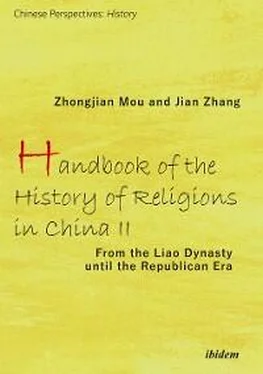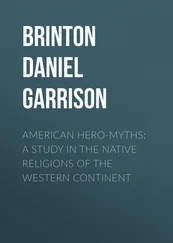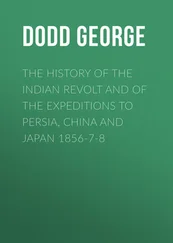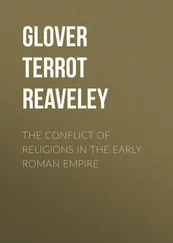3) Zhengtong Daozang 正统道藏 and万历续道藏 Wanli xu Daozang
The Reintroduction of Christianity into China and Clashes with Traditional Chinese Culture
1) Missionaries entered China in every possible way
2) Matteo Ricci’s strategy of Confucianizing Catholicism
3) Nanjing Incident: The first conflict between Christianity and Chinese culture
4) The revival of Christian churches in the late Ming
The Growth of Islam in Ming
1) Islam and the Ming dynasty
2) The emergence of “Scripture-Hall Education”
3) The production of Chinese editions of Islamic writing
The Great Development of Popular Religions in Ming
1) The prosperity of popular religions and the evolution of White Lotus Teaching
2) The Luo Sect and its derivatives
3) The Yellow Heaven Sect and the Red Sun Sect
4) The Three-in-One Teaching
5) General characteristics of popular religions in Ming
Chapter Nine Religions in the Qing Dynasty: Differentiation, Development and Decline
An Overview
Sacrifices in the State Religion
1) Imperial Codes regarding state sacrifices
2) Changes in state sacrifices in the late Qing dynasty
3) The veneration of and sacrifice to Confucius
4) The preservation and evolution of traditional Manchu religious customs
5) The decline and persistence of traditional patriarchal religion
The Development and Decline of Buddhism in Qing
1) The Emperor’s adoration of Buddhism and the Imperial administration of Buddhism
2) The decline of Buddhist schools
3) The predominance of lay Buddhists
4) Secular scholars’ Buddhist studies
5) Tibetan Buddhism in Qing
The Continuity, Diffusion and Decline of Daoism
1) The decline of Zhengyi 正一 Daoism or the Way of Orthodox Unity
2) Quanzhen 全真 Daoism in Qing
3) Daozang jiyao 道藏辑要 and new Daoist writings
4) The continued diffusion of Daoism in the Chinese society
Popular Religions in Qing
1) The Ba’gua 八卦 (Eight-Trigram) Sect
2) Popular religions in the late Qing
The Growth of Islam in Qing
1) Chinese Tariqas
2) Chinese translations of Islamic writings
3) Chinese translations of the Koran
Christianity in Qing
1) A great progress of missionary work in the early Qing
2) The Controversy of Rites and the change of Kangxi’s policy on Catholicism
3) Stricter bans on Catholicism and missionary incidents in three reigns
4) Christianity in the late Qing
5) Christianity in the early modern China: Dr. Jekyll and Mr. Hyde
Chapter Ten Religions in the Republican China (1912–1949)
An Overview
The Resuscitation and Reformation of Buddhism
1) The efforts to modernize Buddhist organization
2) The efforts to modernize Buddhist activities
3) The Grotto of Storing Scriptures in Dunhuang 敦煌
4) Buddhist gurus in modern China
5) Prominent Buddhist scholars’ remarkable achievements
6) Tibetan Buddhism in Republican China
The Fall and Rehabilitation of Daoism in Republican China
1) Political situations and the fate of Daoism
2) Efforts to rehabilitate Daoism
3) The rise of secular scholars’ studies of Daoism
New Growth of Islam in the Republican China
1) The birth and growth of Islamic social organizations
2) The vivid development of Islamic scholarship and culture
3) Eminent Chinese Muslim scholars and their contributions
4) Yang Zenxin 杨增新 (1864–1928) and Xinjiang
Rapid Growth of Christianity and its influence in Chinese society
1) The internal and external conditions for the rapid growth of Christianity
2) The growth of Christian orders
3) Christianity and Republican politics
4) Contributions Christianity made to Chinese society
Preface
Digging into the long history of China, this highly-acclaimed book investigates a variety of religions in a comprehensive and systematic way. These religions include: primitive religions and worship; archaic patriarchal religions; traditional Daoism; popular religions; and non-indigenous religions such as Buddhism, Christianity and Islam. Furthermore, the book discusses in detail the origin, growth, introduction—as well as dissemination—of religions in China. With insightful analysis, the two authors illuminate sects, doctrines, rituals and disciplines of Chinese religions, along with exchanges and interactions between religions, thoughts and cultures. To put it in a nutshell, this revised two-volume General History of Religions in China pulls together vast knowledge and understanding of the cultural roots, characteristics and impact of religions throughout Chinese history.
Professor Mou Zhongjian牟钟鉴 was born in 1939 in Yantai, a beautiful coastal city of Shandong Province. He studied in the Department of Philosophy at the prestigious Peking University. He devoted himself to the history of Chinese philosophy and was awarded his Master of Arts degree. Then, he spent more than 20 years (1966–1987) at the Institute of World Religions at the Chinese Academy of Social Sciences (CASS), where his research focused on the Chinese philosophy and religions. In November 1987, he began teaching at Minzu University of China (i.e. Central University for Nationalities). Mr. Mou has been appointed to the highest level of professorship and is responsible for supervising Ph.D. programs in the University’s Department of Philosophy and Religious Studies. He has been rewarded with prestigious titles such as the National Outstanding Teacher Award. Prof. Mou’s major publications include: Lüshi Chunqiu yu Huainanzi sixiang yanjiu 《吕氏春秋》与《淮南子》思想研究 (An intellectual inquiry into The Spring and Autumn of Master Lü and The Master Huainan ); Zoujin Zhongguo jingshen 走进中国精神 (Walking into the Chinese spirit); Ruxue jiazhi de xin tansuo 儒学价值的新探索 (Ground breaking explorations of the value of Confucianism), and so forth.
Professor Zhang Jian张践 works for the famous Renmin University, or the People’s University of China. He is also a Guest Research Fellow at the MOE’s Research Center for Buddhism and Theories of Religious Study and a Guest Professor at Minzu University. The International Confucian Association offered Prof. Zhang membership of Council and Directorship of the Committee of Dissemination. In addition, he serves as the Vice President of the China Society for Practical Learning. Prof. Zhang is a leading scholar in the fields of history of religions in China and history of Chinese philosophy. He has published numerous monographs such as: Zongjiao, zhengzhi, minzu 宗教·政治·民族 (Religion, politics, and ethnicity); 中国民间宗教史 (History of popular religions in China); and Dexing yu gongfu—Zhongguo ren de xiuyang guan 德性与功夫——中国人的修养观 ( A priori virtues and a posteriori moralities: Chinese ideas of self-cultivation).
Chi Zhen, Ph.D. (2007), National University of Singapore, is Associate Research Fellow at Shanghai Academy of Social Sciences (SASS). He has published monographs and articles on Chinese intellectual history. He devotes himself to the English translation of academic works authored by highly intellectual Chinese scholars. His latest translation work was Marxism and Religion (Brill, 2014).
Читать дальше











